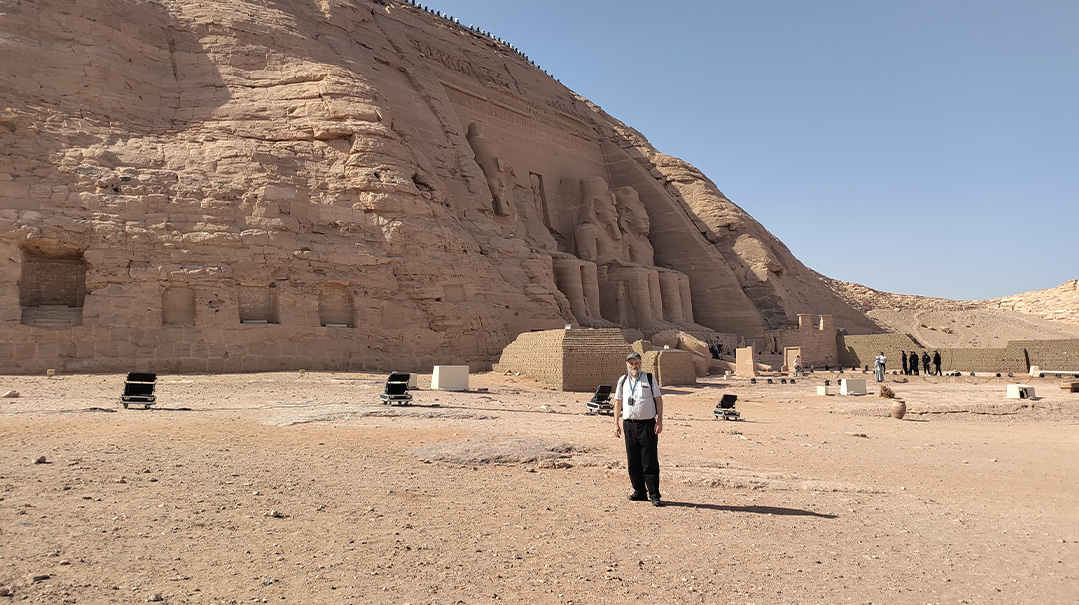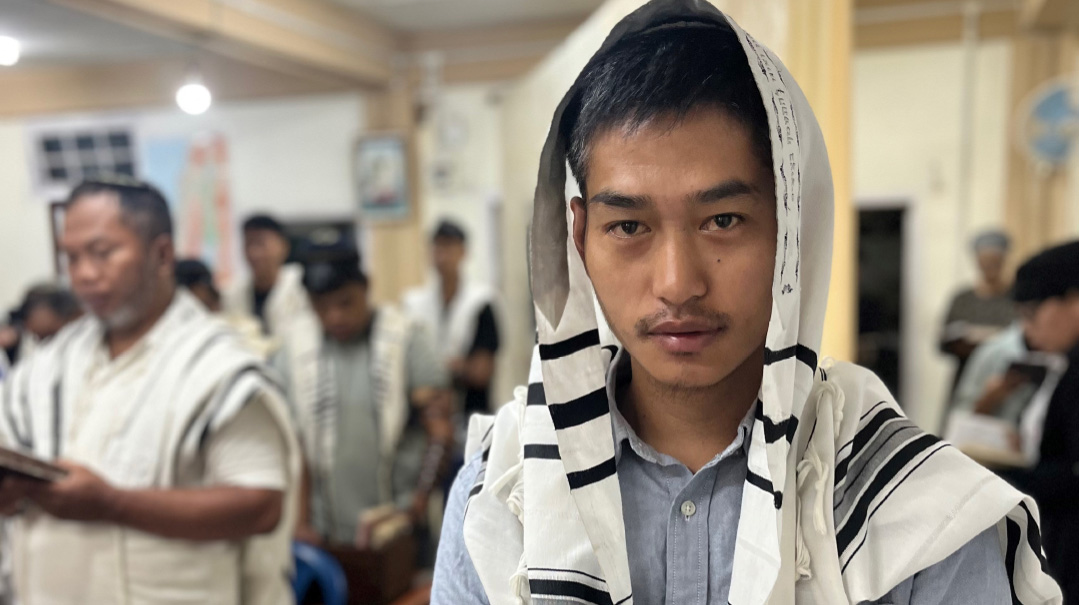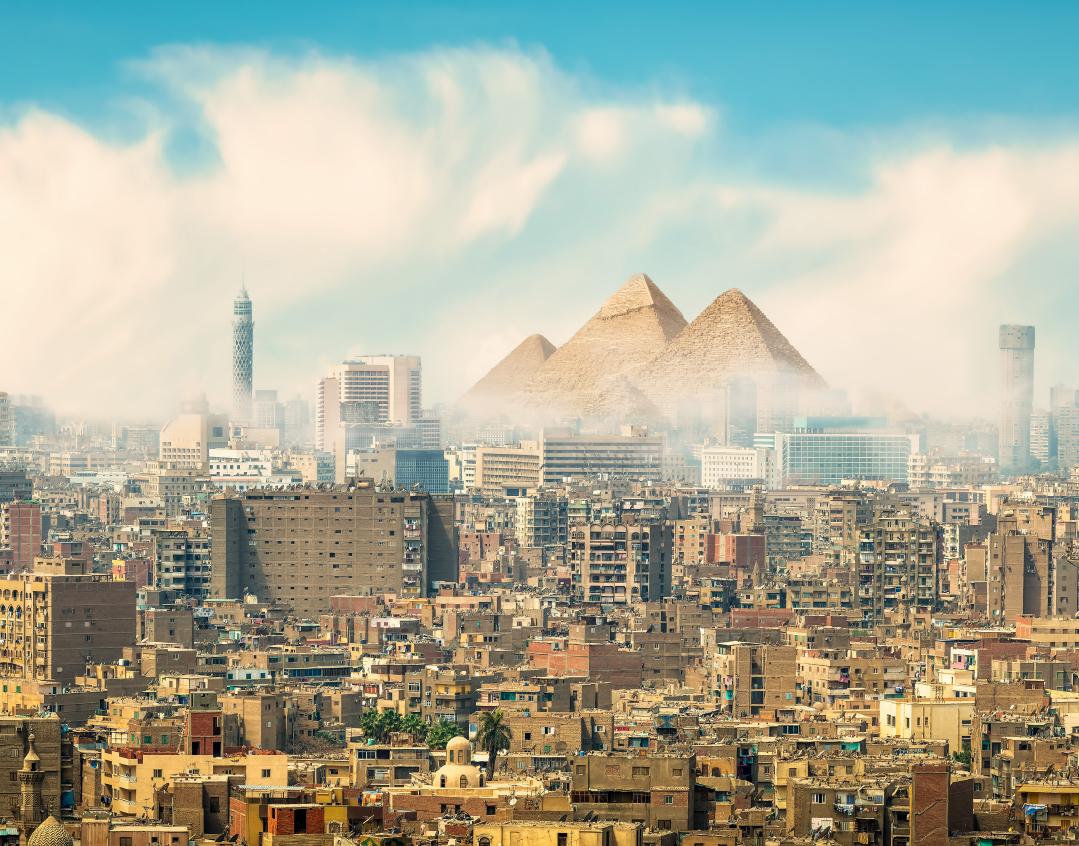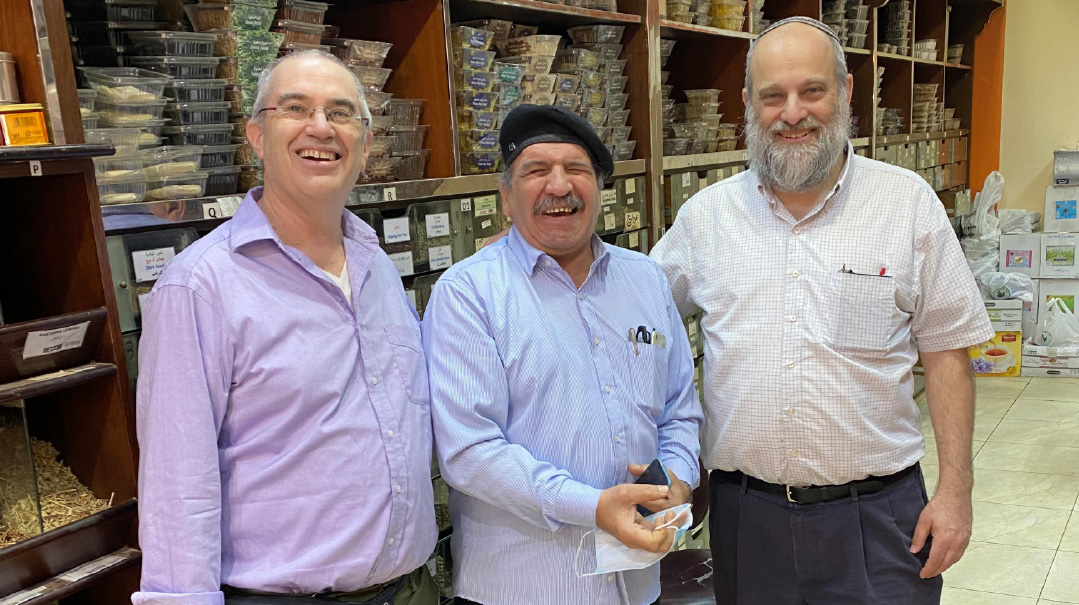Pyramid Schemes
| January 3, 2023Ari and Ari retrace our forefathers' journey to Egypt

Text and photos by Ari Z. Zivotofsky and Ari Greenspan
If the tiny modern Jewish community in Egypt still links its mesorah to the time of the Chumash, how could we not feel like we were there, too? Standing in the central Cairo synagogue, allegedly built on the very spot where Moshe’s baby basket was pulled from the reeds, we imagined the sojourn of our People to the superpower of the time — the iron crucible that forged us into a nation
The Jewish connection to Egypt didn’t end with the sojourn of Yaakov and his sons to Mitzrayim and the Exodus 210 years later after the period of brutal slavery — a paradigm for all future enslavements. Jewish life in Egypt actually spans millennia, and amid all the ups and downs, great luminaries such as Rav Saadia Gaon, the Rambam, Radvaz, the Arizal and many more are associated with Egyptian Jewish communities.
Still, when visiting modern Egypt and exploring the Jewish connections, it is only natural to think back to our people’s earliest sojourn in that land, and remnants of the storied Egyptian dynasties can shed light on our nation’s formative years. As guest speakers on Miriam Schreiber’s Legacy Kosher Tours trip to Egypt, and in another private excursion to the Land of the Pharaohs, it wasn’t hard for us to put ourselves back in time. Indeed, driving from the airport to downtown Cairo, we went on a bridge that took us over the Nile, and just hearing that word conjures up images of Moshe in his reed basket. Later, as we were gliding down the Nile in a boat, we observed firsthand the dense reeds along the edge and were really able to envision a sweet Jewish baby being watched over by his concerned older sister from the banks of the Nile.
In fact, the Jewish community in Cairo still links its mesorah to the Jews in the time of the Chumash. One of our first stops was the famous Ben Ezra Synagogue, located in the old part of Cairo. This shul, where the Rambam is said to have davened, has been refurbished numerous times over the last 1,000 years and is today a major tourist site. While we stood there, groups of tourists from Europe, the US, and Asia filed in and heard from the Egyptian guide how the Nile allegedly used to reach the site where we were standing, and that site was, by tradition, the very spot where Baby Moshe’s basket had been hidden in the reeds.
Intrigued by the connection between an Egyptian shul where the Rambam davened and Moshe Rabbeinu, we set out to find what other traditions or links still exist in modern Egypt that bring us back to the stories that we read in the parshiyos this time of year.
Oops! We could not locate your form.







